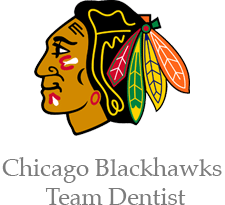 Self-confidence starts with a great smile. Many cosmetic dentistry options are available to give you the beautiful smile you deserve. Dental bonding is one of the treatments your dentist might suggest. The bonding material blends in seamlessly with your natural teeth—no one will know the difference!
Self-confidence starts with a great smile. Many cosmetic dentistry options are available to give you the beautiful smile you deserve. Dental bonding is one of the treatments your dentist might suggest. The bonding material blends in seamlessly with your natural teeth—no one will know the difference!
What Dental Bonding Is
Dentists can shape and shade a composite resin material to apply to a tooth. This process is known as dental bonding. The composite resin is a special mixture of glass and plastic that’s safe for use in human dentistry.
What Dental Bonding Can Fix
Dental bonding is actually useful for both general and cosmetic dentistry purposes. Patients with tooth decay, for instance, can get the decayed material removed. The dentist will then apply composite resin to create an aesthetically pleasing filling. The composite resin is a great alternative to traditional amalgam fillings, which are far more visible. Dental bonding is also useful for repairing teeth that have minor chips and cracks. (Teeth with severe damage will likely need a crown instead.) Composite resin bonding can also address cosmetic concerns like these:
- Asymmetrical shape of the teeth
- Gaps between teeth
- Teeth that look too short
How Dental Bonding Is Performed
If your dentist determines that dental bonding is right for you, you’ll probably be able to have it done in the same appointment. Little preparation is needed. If the dentist is using the composite resin as a filling for a cavity, he or she will first apply a local anesthetic to eliminate discomfort. Anesthetic is rarely necessary when dental bonding is done for cosmetic reasons alone. The dentist will start by etching the tooth. This creates a roughened surface, which allows the composite resin to stick to it better. The dentist then applies a conditioning liquid, followed by the composite resin. He or she will carefully mold the resin until it’s in the right shape before hardening it with a laser. The material will be further trimmed and polished until the desired results are achieved.
Dental bonding is one of the many cosmetic dentistry services we offer here at University Associates in Dentistry . From missing teeth to discolored teeth, we can treat it all in our modern, high-tech office. Call (312) 704-5511 to schedule an appointment for cosmetic dentistry services in Chicago.


